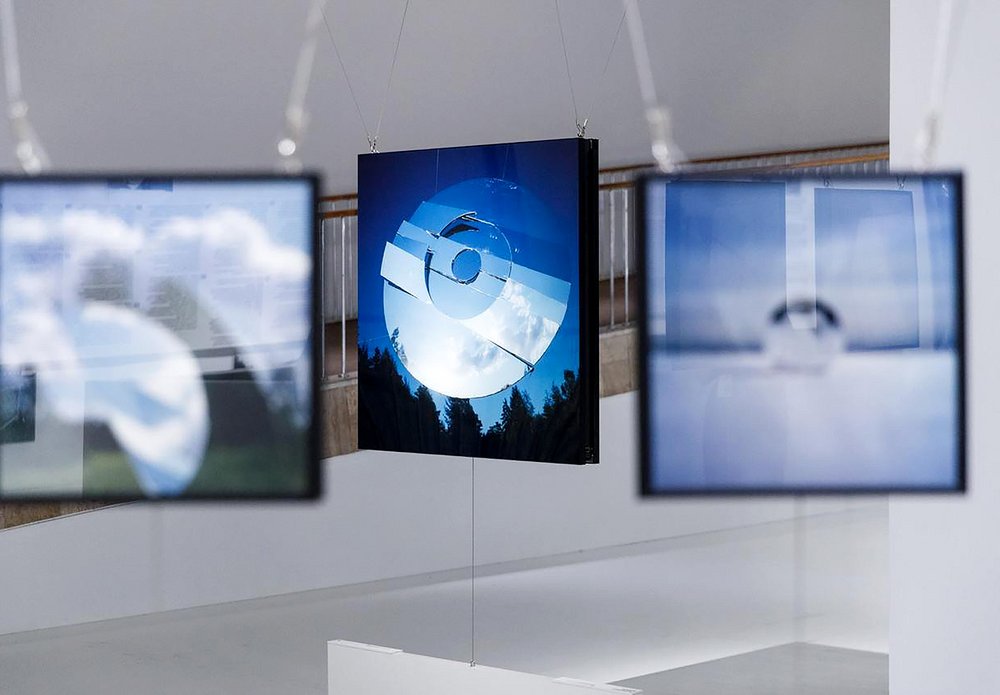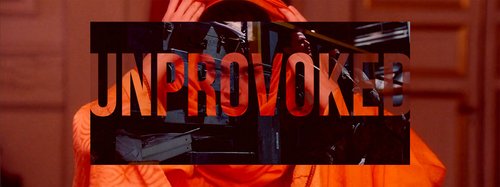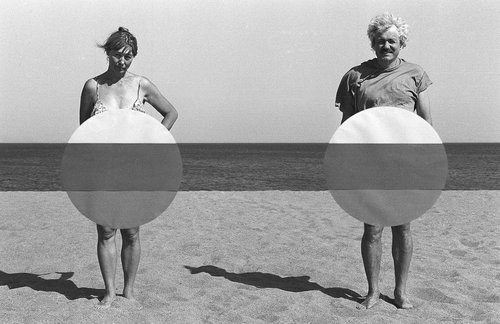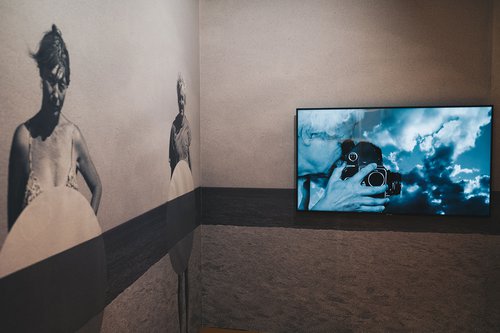Between Art, Science and Propaganda

Francisco Infante-Arana’s solo retrospective at the Tretyakov in Moscow includes sketches and photographs of kinetic installations once commissioned by the Soviet government. Although the communist bosses disliked contemporary art they did use it to improve the image of the nation, something which the authorities in Russia are not keen to emulate today.
Francisco Infante-Arana (b. 1943)’s survey show is a feast for the eyes and a severe yet altogether pleasant shock for visitors to the State Tretyakov Gallery, Russia's leading museum of national art. Infante, curator Irina Gorlova and architect Yevgeny Asse designed the show together wanting it to stand out from previous exhibitions, difficult for an artist who has had no less than a staggering 98 solo exhibitions to date and even now three are running simultaneously in Moscow (at GES-2 and Krokin Gallery in addition to the Tretyakov’s suvey show). Pooling their resources, this esteemed trio has risen to the challenge and just as Infante's art plays with our perception of space through mirrors, grids and other ingenious interventions in the landscape, the exhibition radically reshapes the familiar space of the Tretyakov's main exhibition space. The vast room in the museum's Brezhnev-era annex, formerly known as the Central House of Artists, is usually divided by floor to ceiling partitions on which the paintings are hung yet Infante's show has no walls at all, the room it has been transformed into an airy, icy white space evocative of an international Kunsthalle. Here, Infante’s large colourful photographic prints float in the air, supported by barely visible strings as if defying the laws of gravity
For lovers of contemporary art in Moscow, this exhibition is seen as a sign of hope as the museum had recently showed a reluctance to exhibit living artists. In the Spring of 2023 director Elena Pronicheva announced in an interview with The Art Newspaper Russia that the Tretyakov "will not be a museum of contemporary art", and its New Trends Department was shuttered last November. So Infante's retrospective is resolutely a piece of good news. The bad news is that Nonna Goryunova (b. 1944)’s name, is sadly missing from the exhibition's title - Francisco Infante’s wife and co-author over the past half a century – but there is apparently a reason for that. As well as the inventive photographic projects for which the couple became famous, the exhibition also includes early paintings by Infante, which he made independently as well as installations commissioned by the Soviet government. The latter works have not survived but the artist's sketches and archive photographs are on display.
Infante was part of the Soviet underground art scene, and also took part in several unofficial art exhibitions in Western Europe and America in the 1970s, including the so-called ‘Biennale of Dissent’ in Venice in 1977. This is only part of the story. Infante’s coming of age as an artist coincided with Khrushchev's Thaw which was an era of liberalisation in Soviet culture and society in the 1960s. As a member of the art group ‘Dvizheniye’ (Engl. Movement), while still in his 20s Infante participated in officially sanctioned exhibitions in the USSR and abroad, mostly across Eastern Bloc countries. This group was also picked up in the West when in 1968 it was invited to take part in the 4th Documenta in Kassel. That same year, the 25-year-old artist developed a groundbreaking concept to light up the Kremlin, where the colours would change to the sound of music by Bach. This project was never in fact realised, but Infante did continue to receive state commissions, mostly temporary installations for trade exhibitions showcasing the achievements of Soviet industry and science. In 1970 he founded a collective of artists and engineers called ARGo and together they undertook many such commissions with rather unimaginative names like Chemistry-70, Building Materials-72 or Telecommunications-75.
In the 1970s, Khrushchev’s Thaw gave way to Brezhnev's period of Stagnation. In the visual arts, with the exception of socialist realism all styles and movements were once more frowned upon. ‘Formalist’ art, a very broad term covering most modernist movements including all kinds of abstraction, was banned in the USSR, but surprisingly kinetic installations at exhibitions somehow escaped the censors’ axe. The authorities continued to use kinetic art to create an image of the USSR as a technically and culturally advanced country on the cutting edge of progress. (Although, in fact, kineticism as a style was not exactly new, at least in the West. One of its founding fathers, Naum Gabo (1890–1977) – ironically a Russian émigré – created the first kinetic artwork as early as 1920).
It is interesting to compare this situation with today. It seems that works of art on the edge of art and science, created with the most advanced technology, are now merely tolerated by the authorities, rather than used as proof of the country's technological prowess. The kind of projects that find their way into the halls of state museums seem to perpetuate the myth of scientists living in an ivory tower, oblivious to the real problems of society. Moscow Museum of Modern Art is showing ‘...One Artsapiens ID’ by artist and perfumer Anna Kabirova (b. 1980). It is dedicated to synesthesia: in a series of experiments, the artist managed to transform colours into sound waves, which in turn were transformed into 3D-printed sculptures, while the information about colours was also transformed into smells. Ironically, for an exhibition on the interplay of five senses it offers visitors very little stimulation to the senses where in a darkened room they find only a few containers of odd-smelling substances, some unshapely 3D-printed plastic pieces, and numerous information boards and screens.
One of the few supporters of Art & Science in Russia is the Norpeksal Foundation, founded by Oleg Chirkunov, a former governor of the Perm region which today works closely with PERMM, the city's museum of contemporary art. Together they launched a scholarship programme for artists and scientists to work together. An exhibition of their fellows entitled ‘Art & Science: Open Bodies’ ran at PERMM late last year, closing earlier this month, curated by Dmitry Bulatov (b. 1968) – an artist, curator and long-time advocate of the Art & Science movement in Russia and one of the curators of the Baltic branch of the Pushkin Museum of Fine Arts in Kaliningrad. The exhibition showed that kineticism in its new digitalised form is alive and well and among the winning projects was a kinetic installation called ‘Green Noise’ by Anna Martynenko (b. 1985) and Varvara Semyonova (b. 1991). Their green panels turn and spin in response to pre-recorded urban sounds. Most of the artworks challenged the common sense definition of ‘living matter’. There was even a 3D-printed living organism by Maria Kuptsova (b. 1998). The only project that addressed social issues more or less directly was Inclusion Machine by Aleksey Shulgin (b. 1963) and Alexander Serechenko (b. 1982). This media installation was based on machine learning technology, programmed to analyse a video stream from a webcam in real time, and viewers could teach it to exclude certain types of people based on gender, race, age or various other criteria. Beyond the surface of a fun interactive ‘toy’ the artwork sparked a debate about the mechanisms of exclusion in society.
The museum has regularly hosted exhibitions of art and science and new media art. However, since PERMM’s long-time director, Naila Allakhverdieva, resigned in December 2024 following a sudden FSB search of the museum (and for reasons that have never been officially disclosed) it is unclear whether this institution will continue its current exhibition policy.
Located in Russia’s westernmost outpost of Kaliningrad, the Baltic branch of the Pushkin Museum is a veritable oasis of Art & Science projects. This city, formerly known as Konigsberg, is the hometown of Immanuel Kant and the surrounding region, formerly East Prussia, is Russia’s Baltic exclave, wedged between Poland and Lithuania. It is currently hosting a group exhibition, ‘Live Topologies/Non Human Agents’, in which ten artists selected by artist and curator Dmitry Bulatov explore the life-like behaviour of entities that are not 'alive' in the strict biological sense, such as ‘programmable matter, symbiotic forms and hybrids, and bacterial landscapes’, according his text. Some of the winning projects from the Norpeksal and PERMM fellowship programme were shown simultaneously at PERMM and in Kaliningrad. ‘Living Topologies’ exhibits include a robot-fungus hybrid by the Ekaterinburg-based art group ‘Where Dogs Run’, and a musical chess set by Marusya Nesterova (b. 1997) and Alexander Bedin where every move a player makes creates a sound.
Soviet-style exhibitions no longer exist in Russia, they have become ordinary trade fairs, while the largest, the VDNkH outdoor exhibition complex in Moscow, has been reborn as a cluster of museums in a park. But there are signs that this tradition may be returning. The National Centre Russia, which opened in November 2024 in the former Expocentr exhibition complex in Moscow, houses a permanent section dedicated to the highlights and achievements of various Russian regions, as well as a space for temporary exhibitions. One of these, called ‘Legacy for the Future’, is a group exhibition of young artists from Russia, China, India, Brazil, Ethiopia and Iran, curated by Semyon Mikhailovsky, Head of the St Petersburg Academy of Art. The artists in the Russian section of the show are students from this academy as well as other state universities. They work in a variety of media, and there are also two small yet ingenious Art & Science projects, both by groups of students from the Moscow University of Science and Technology (MISIS). The first, called ‘Epishura’, is a portable device for tasting the quality of drinking water. This device is displayed against the backdrop of a screen with a colourful, eye-catching video about the project. The second, ‘Under Pressure’, is also a wearable object, both an ornament and medical device in one. It measures the stress levels of the person wearing it by analysing their heartbeat rate and turns this into light signals that tell the wearer and those around them about their emotional state.
But these two tricky contraptions are dwarfed by works in other media such as oversized sketches of religious murals, 3D-printed models of as-yet-unbuilt Russian Orthodox churches and huge, academic paintings with pompous titles such as ‘Icarus’, ‘The Death of Licurgus’ or ‘The Feat of the Hermitage. 1941’. (The latter shows State Hermitage employees removing masterpieces from the walls, packing and sending them to storage to save them from the approaching Nazi troops). They, in turn, are dwarved by a giant steel sculpture of a sleeping child called ‘The Son of the Earth’ dominating the centre of the hall, by a Chinese art student called Dong Shubing. It seems that, if you have ever wondered about Russia's current priorities in the field of culture and human knowledge then this exhibition will tell you all you need to know.
Francisco Infante. Metaphors of Eternity
Moscow, Russia
21 January – 13 April 2025
Francisco and Platon Infante. Celestial Artefacts
Moscow, Russia
19 September 2024 – 2 March 2025
Francisco Infante and Nonna Goryunova. Intervals
Moscow, Russia
16 January – 23 February 2025
...One Artsapiens ID
7 December 2024 – 2 February 2025
Living Topologies / Non-Human Agents
Baltic Branch of State Pushkin Museum of Fine Arts
Kaliningrad, Russia
13 December 2024 – 16 February 2025
Legacy for the Future
Moscow, Russia
7 November 2024 – 2 February 2025





























